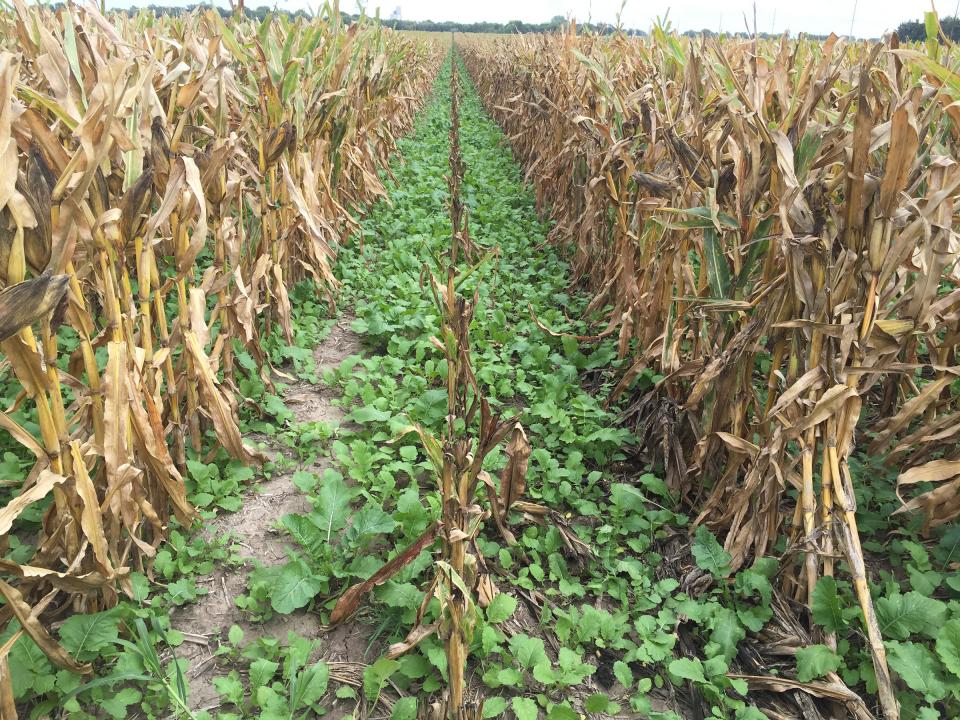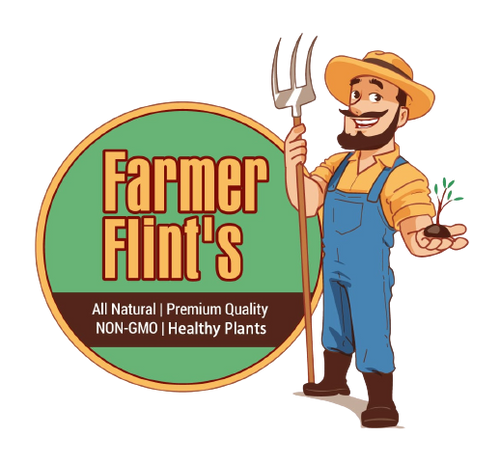Introduction
Cover cropping is a sustainable agricultural practice that involves growing plants to improve soil health and combat weed, pest and erosion issues between cash crops. By planting cover crops during fallow periods, farmers are able to take advantage of numerous environmental and productivity benefits. However, cover cropping also presents some challenges that need to be carefully managed. In this post, I will explore both the advantages and disadvantages of incorporating cover crops into farming systems.
The soil is one of the most important resources for any agricultural operation. It's essential that we adopt practices to improve and protect this non-renewable resource over the long run. Cover cropping has been shown to offer significant soil quality advantages when implemented properly. Let's take a closer look at some of the key soil benefits of this conservation practice:
Soil Benefits of Cover Cropping
Improved Organic Matter
One of the primary ways that cover crops enhance soil is by increasing its organic matter content. As cover crop roots break down and residue is left on top of the soil, they add carbon back into the system. This enriched organic matter acts like a sponge, helping the soil better retain water and nutrients. With higher organic levels, soil structure is improved as aggregates form which allows for better aeration, drainage and root penetration. Long-term, this results in darker, healthier and more fertile soils that are less prone to erosion.
Reduced Erosion
The benefits of cover crops are especially evident when it comes to preventing soil loss from water and wind erosion. By establishing a groundcover during vulnerable off-seasons, the soil remains protected from the impacts of raindrops which can dislodge particles. The complex root systems of cover crops also help bind soil aggregates and increase water infiltration. This shields topsoil from being washed or blown away and degrading local waterways. Protecting our precious topsoil layer from depletion is crucial for sustaining long-term agricultural productivity.
Improved Soil Biology
Perhaps one of the more underappreciated functions of cover cropping involves the enhancement of soil biological activity. As cover crop residues break down, they feed microorganisms and stimulate soil food webs. More active soil biology leads to improved nutrient cycling and helps condition the soil into stable, loose aggregates. Certain cover crops also enhance specific beneficial fungi and microbes associated with crop health and nutrient availability. Overall, higher biodiversity belowground creates a fertile living ecosystem in the soil to support plant growth.
Increased Nutrient Availability
Many cover crops are naturally able to fix atmospheric nitrogen through root symbiosis or scavenge nitrogen and other nutrients from deeper soil profiles. As their tissues decompose, this “new” nitrogen and nutrients become available for subsequent cash crops. For example, legume cover crops like clovers and vetches provide a boost of nitrogen that can offset or eliminate the need for synthetic fertilizers. Their deep robust root systems also mine trace nutrients from subsoil layers and cycle them upwards. This promotes more balanced and efficient nutrient cycling within the whole soil profile over time.
Reduced Compaction
The ability of cover crops to develop extensive fibrous root masses helps reduce and relieve soil compaction issues. As they grow, cover crop roots penetrate dense layers and break up compacted zones created by field traffic or tillage pan. This improves soil tilth, aeration and drainage - reducing limitations to cash crop growth. Deep rooted cover crops are especially effective at alleviating plow pans that can restrict water infiltration and rooting depth in agricultural soils over the long-term.
As you can see, cover cropping offers numerous soil quality and fertility advantages that reverberate throughout the whole agroecosystem. Healthier, more structured and biologically active soils form the foundation for productive, sustainable and profitable farming now and far into the future. While environmental protection benefits like erosion control are also major drivers, it’s these edaphic improvements that really set cover crops apart as a smart long-term investment.
Cover Cropping Benefits for Weed, Pest and Disease Management
In addition to building soil health, cover cropping brings other on-farm benefits related to integrated pest management. Certain cover crop species and mixtures have allelopathic, competitive and disruptive properties that can reduce weed pressures and some pest and disease problems in agricultural crops:
Weed Suppression
The dense vegetative groundcover provided by cover crops outcompetes weed seedlings for light, water and nutrients. Some allelopathic cover crops like brassicas also release chemical compounds that inhibit weed germination and growth. When established cover crops are terminated 2-3 weeks before cash crop planting, they form a thick mulch layer that smothers existing weeds. This makes mechanical and chemical weed control much easier with fewer weeds to deal with later in the main crop.
Pest and Disease Disruption
Rotating cover crops breaks up pest and disease life cycles by introducing new non-host plant species. Certain cover crop varieties also attract predatory insects that control harmful pests. For example, some cover crops harbor fungi or parasites that attack soilborne pathogens. The diverse mix of plants associated with cover cropping systems makes it harder for single pest or disease problems to become established. Some research also shows allelopathic cover crop residues can have anti-fungal and anti-microbial properties.
Pollinator Habitat
Cover crops provide nectar and pollen resources for important pollinators like bees, butterflies and hummingbirds - especially during fall/winter/spring when other forage may be limited. Maintaining healthy pollinator populations supports both wild species diversity and crop pollination services. Certain cover crops like clovers, phacelia and buckwheat have been shown to boost populations of wild bees that pollinate neighboring cash crops.
Naturally, the weed control, pest disruption and biodiversity benefits of thoughtful cover cropping depend on selecting the right mix and management approach tailored to a given cropping system and location. But with the right planning and species composition, cover crops offer numerous integrated options to enhance on-farm sustainability that many conventional systems lack. Their multifunctional benefits to both the environment and farm productivity make sound agronomic and economic sense.
Additional Cover Cropping Advantages
Beyond soil and pest management impacts, cover cropping provides farmers several other useful agronomic advantages:
Flexible Planting Dates
Cover crops enable the extension of the planting window for cash crops. By overwintering a cover crop that is terminated just prior to planting, fields can be worked and planted several weeks earlier in spring versus relying on fallow ground. This allows more flexibility to suit ideal weather conditions. It also spreads workload demands across a longer season.
Earlier Spring Forage
For livestock farmers, some cover crops like cereal rye or annual ryegrass provide excellent early spring grazing at a time when other forages may be limited. Moving cattle to cover crop pastures eases pressure on permanent pastures, avoids issues with mud and improves nutrient return to fields through manure deposition before cash crops are planted.
Extended Growing Season
On the other side, some cover crops like winter rye or oats can remain productive into late spring/early summer, partially overlapping the early growth stages of cash crops. This extended green leaf area helps scavenge residual soil nitrogen that might otherwise be lost over winter or early spring. The cover crop also suppresses weeds vying for the same niche and protects the soil.

Flexibility with Conservation Compliance
For farmers enrolled in commodity or conservation programs, cover cropping provides flexibility to better comply with the USDA’s cropland retirement and erosion control requirements. Cover crops allow nutrient deficient or otherwise idle fields to remain productive while still meeting set-aside acreage quotas and soil conservation compliance guidelines.
Increased Yield Potential
Over multiple years of improved soil health through cover cropping, research shows significant yield benefits realized for many cash crops. Soil organic matter increases, balanced nutrient availability, better tilth, pest/disease suppression and reduced stresses like drought can all positively impact crop productivity potentials on farms. Yields are stabilized as soil quality improves and risks are reduced.
While cover cropping must be tailored to regional growing conditions and existing farm operations, these advantages demonstrate the positive role they can play as part of comprehensive conservation-based cropping systems. Where adopted strategically, cover crops offer efficiency, flexibility and yield stability benefits in addition to building long-term soil and environmental sustainability.
Challenges of Cover Cropping
Of course, switching to cover cropping also presents some challenges that need to be acknowledged and proactively managed, or the full soil health benefits may not be realized. Especially for farmers just getting started with these conservation practices, the following potential issues warrant consideration:
Increased Inputs
Establishing and terminating a cover crop requires additional labor, time, equipment use and seed/fuel/herbicide costs relative to fallow ground. Learning curves exist for selecting suitable cover crop species and cultivars, planting and termination timings that align management goals and synchronize with cash cropping cycles. These upfront investments often deter initial adoption.
Moisture Competition
During establishment, some cover crops may use soil moisture needed by the following cash crop. Proper species selection and timely termination aimed at excess moistures periods helps minimize this risk. Small grain covers terminate easily, whilesome broadleaves require burndown herbicides which add cost. Moisture stress must be monitored in dry areas or drought years.


